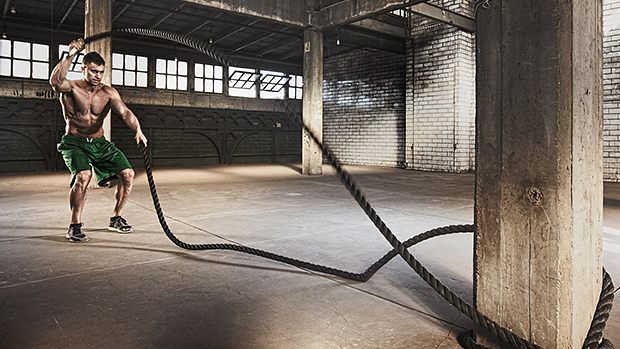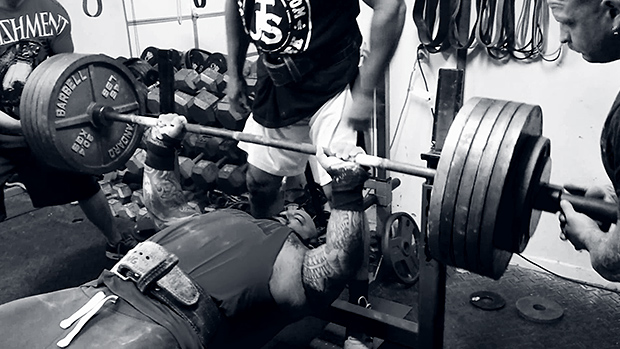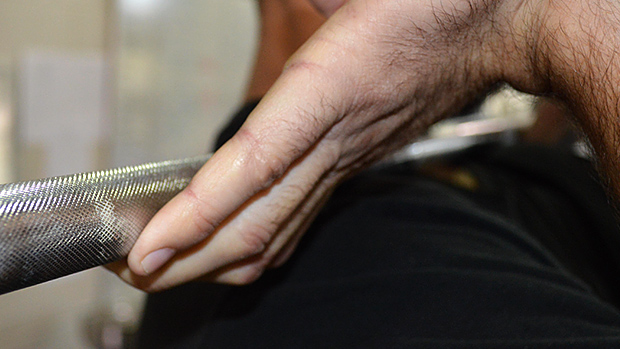Here's what you need to know...
- Developing the ability to control your breathing will allow you to deliver more oxygen-rich blood to your muscles, efficiently lower your heart rate and blood pressure, maintain optimal conditions at the biochemical level, and most importantly, kick some butt.
- These combinations were designed to optimize breathing in a stressed state. Each of them will teach your body how to respond in the absence of oxygen so that you can keep your composure, perform at your highest levels, and come out victorious.
Walking back to your corner, your lungs feel like they're on fire. Your heart rate is racing towards unknown territories. You only have sixty precious seconds to lower your heart rate, catch your breath, and resume the battle.
You look across the ring at your opponent. He resembles a lion patiently waiting to attack his prey – cool, calm, and collected. In this moment, he's gained the advantage over you.
The question is, why aren't you cool, calm, and collected? Why didn't you develop the ability to control your breathing, to switch your nervous system from a state of fight or flight to a parasympathetic one? This would have allowed you to deliver more oxygen-rich blood to your muscles, efficiently lower your heart rate and blood pressure, maintain optimal conditions at the biochemical level, and most importantly, kick some ass.
Before the next time, you should practice these four fire-breathing finishers that were designed to leave you gasping for air. These combinations were designed to optimize breathing in a stressed state. Each of them will teach your body how to respond in the absence of oxygen so that you can keep your composure, perform at your highest levels, and come out victorious.
1 – Kettlebell Swings and Plank Breathing
In this finisher you'll pair an explosive movement with a plank. The kettlebell swing serves as a perfect choice for power, endurance and time-based sets. With proper execution, your heart rate will be elevated and your oxygen demands will increase.
These are paired with planks because abdominal weakness provokes a poor breathing pattern and diaphragm dysfunction. This combination will allow us to train the bracing of the abs while practicing optimal respiration. The plank will demand the respiratory muscles to work simultaneously with the transverse abdominus, external and internal obliques, and rectus abdominis. Instead of holding the plank for time, you'll count each breath in and out as a repetition.
Execution: Perform 20 swings and without any rest, drop into a plank position. Perform a hard style plank for 10 deep breaths. Repeat this for 5 to 10 rounds. To perform the hard style plank, do the following:
- Set up on elbows and toes with a neutral spine. Look down to keep the head and neck in neutral as well.
- Contract the quadriceps. Don't just extend your knees. Instead, think of zippering up the quads and pulling the kneecaps up towards the hips.
- Posteriorly tilt the pelvis and contract the glutes hard.
- Engage the lats by pulling the elbows towards the pelvis. Don't allow the elbows to move. Instead, think of pulling the scapula downwards.
- Breathe. Your body will automatically brace in this position. Learn how to breathe behind the abdominal contraction by allowing your rib cage to laterally expand and your belly button to move down and outward.
2 – Battling Ropes and Side Planks
In this finisher, you'll take the next step in the integration of the abs with breathing. The side plank is a great exercise for learning how to breathe correctly. It'll place your body automatically in an advantageous position to get oxygen by using your diaphragm and abdominals.
Execution: Perform as many rounds as possible of the following within a 10-minute period:
- Perform 30 seconds of battling ropes with any technique you want.
- Without rest, assume a side plank position.
- Rest until your heart rate drops to 130-135 beats per minute. (That's assuming you're wearing a heart monitor. If not, hold the side plank for at least 30 seconds.)
- Perform another round of ropes with the side plank on the opposite side.
3 – Sled and Farmer's Walks
Two of our favorite training tools are the sled and the farmer's walk, but when you put them together, they make one serious tag team.
After the completion of an all-out sled sprint, pick up a pair of heavy weights and walk back to the start. Think of the farmer's walk as a moving plank; the weight in your hands will depress the scapula and make it difficult to breathe. This is a perfect opportunity to keep your posture and breathe deeply into your stomach.
Execution: Repeat the following for 4 to 6 rounds:
- Perform a sled push for 30 to 60 yards one way. Choose a weight that allows you to produce high speed. The sled sprint should last 20-30 seconds.
- Upon completion of the sprint, grab a pair of weights (dumbbells, kettlebells, handles, barbells, Dead-Squat™ Bar) and walk back to where you started.
- Rest for the amount of time it takes you to walk back to the sled.
4 – Walking Kettlebell Squat Ladder
This isn't your typical walk of shame because the kettlebell front-squat walking ladder is a workout in itself. The load of the kettlebells in the rack position of each arm makes it extremely difficult to breathe upwards in a faulty fashion. Instead, you must use belly breathing as your heart rate elevates with every set of squats.
Execution:
- Set up for a front squat with the kettlebells in the rack position.
- Perform 5 squats.
- With the kettlebells remaining in the rack position, walk 15 to 20 yards.
- Perform 4 squats.
- Walk back to the starting position, again with the kettlebells in the rack position.
- Perform 3 squats.
- Continue in this fashion until you perform 1 squat.
Each of these finishers will make you want to bend over to suck in as much oxygen as you can. We recommend cycling through all four of these finishers over the course of a week (one on Monday, one on Tuesday, etc.). As you progress, increase the duration of time of the first metabolic exercise and decrease the rest period.





